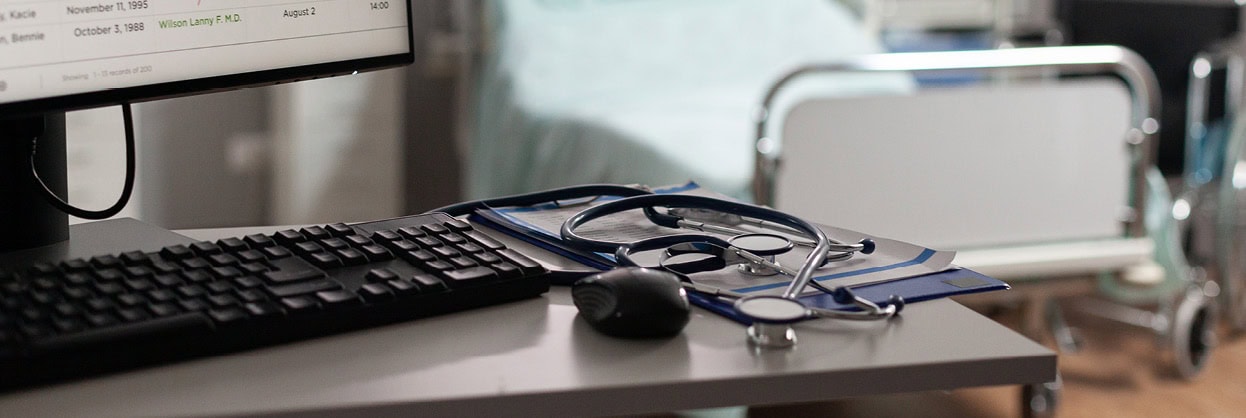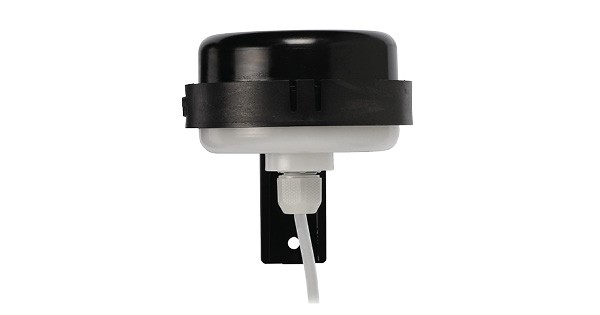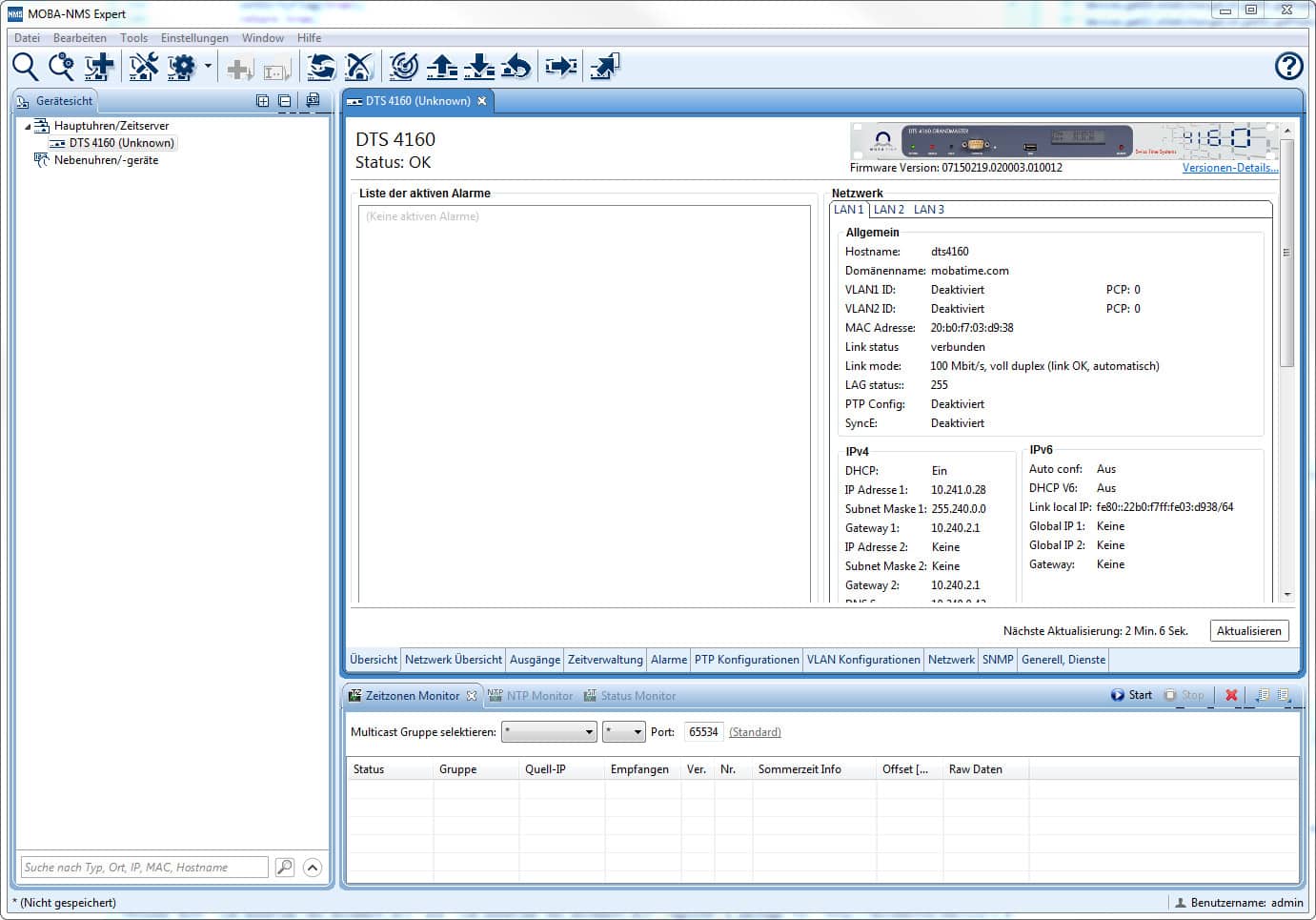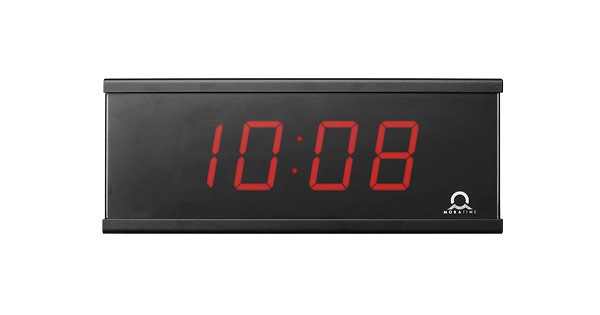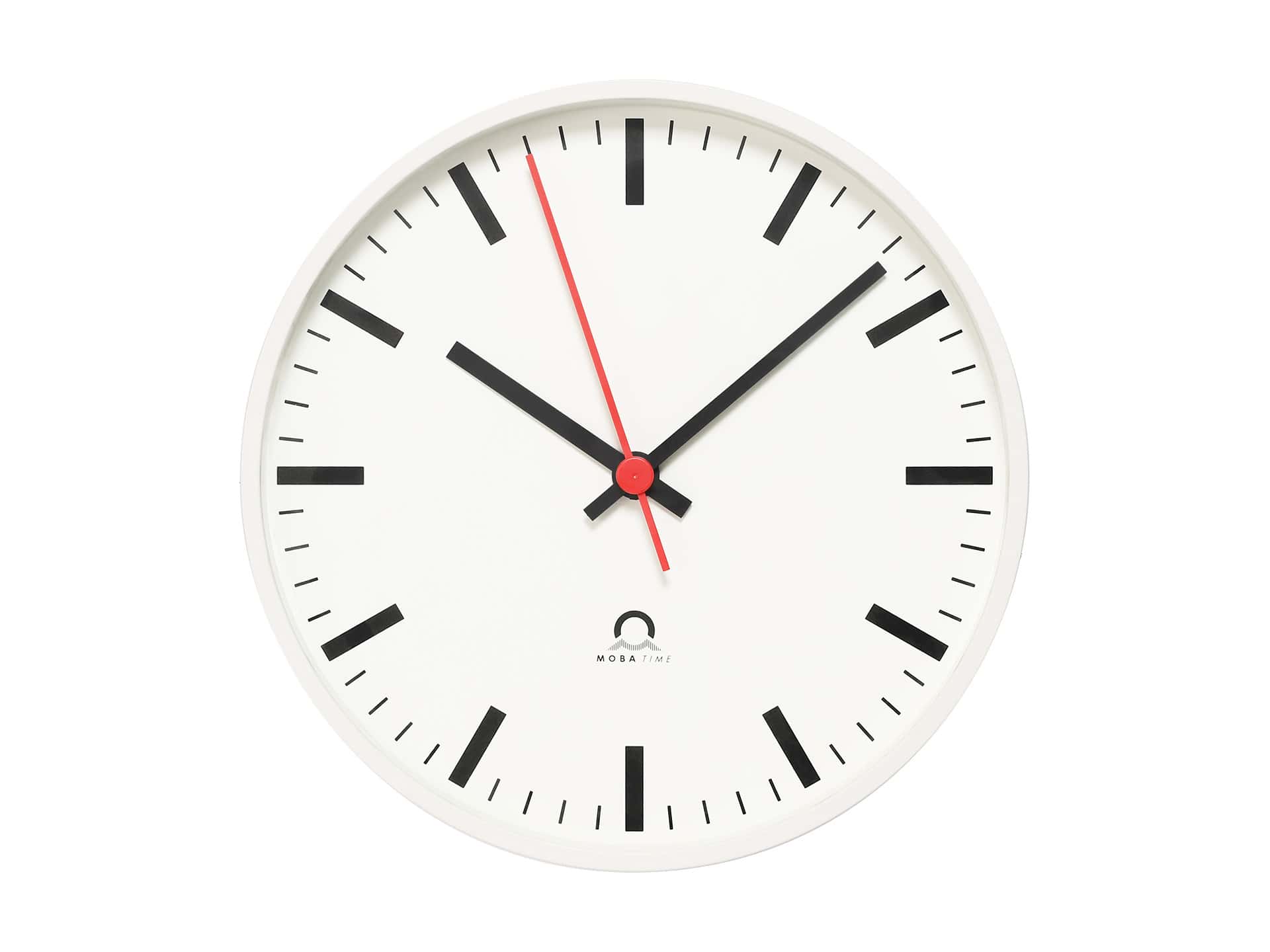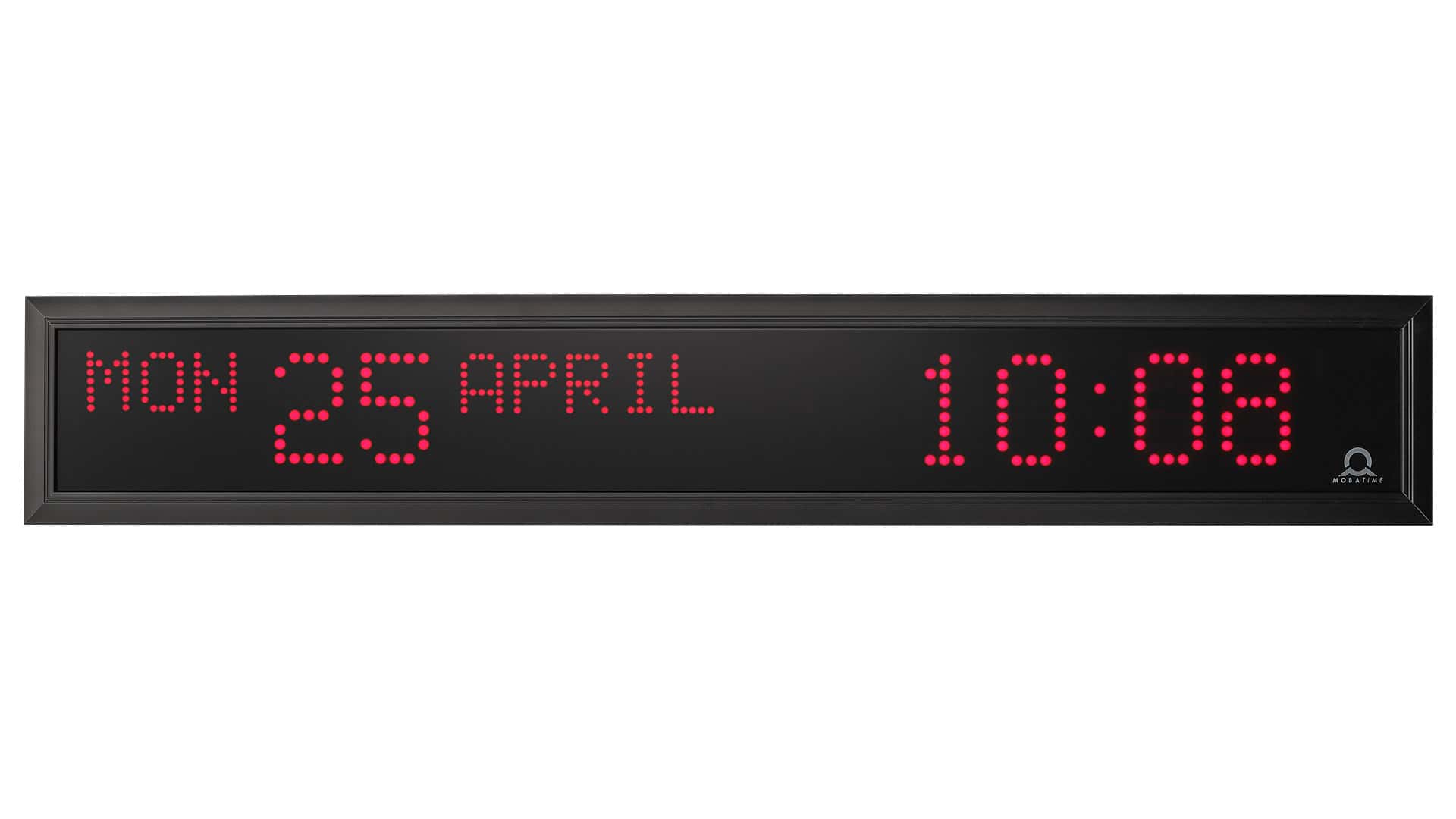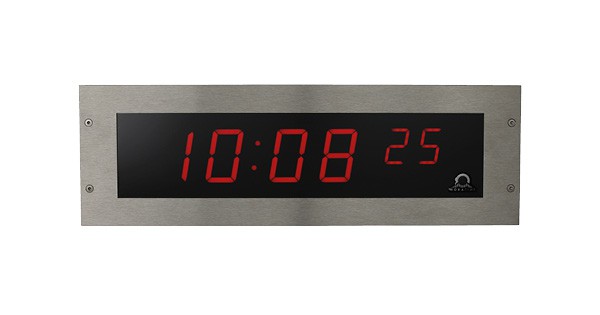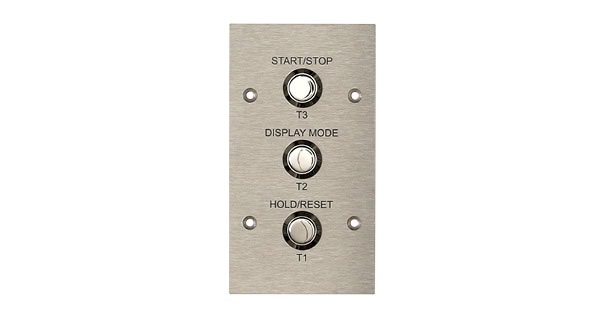Importance of time synchronization in healthcare facilities

Introduction
As we are now characterized by precision and efficiency, accurate time synchronization is of central importance in various industries, especially in healthcare, where every moment counts. This article highlights the critical role of accurate time synchronization in medical facilities and shows how modern time display and synchronization systems improve patient care and operational efficiency. Statistical evidence shows that even small deviations in synchronization can have serious consequences, from medication administration to surgical coordination. In an area where precision can be life-saving, the need to invest in reliable systems is obvious.
Table of content
- Statistical insights: impact on patient care
- The role of precise time data in healthcare facilities
2.1 Influence on medication administration and operation times
2.2 Challenges in the implementation of accurate timing systems in healthcare facilities
2.3 Existing problems and limitations
2.4 Risks and consequences of imprecise time measurement - Technological solutions for time display and synchronization in the field of healthcare facilities
3.1 Time server
3.2 Multi GNSS Receiver GNSS 4500
3.3 Management Software
3.4 Analogue and digital clocks for the healthcare facilities area
3.4.1 Clocks for corridors, waiting rooms, offices and reception areas
3.4.2 Clocks for Operation rooms - Benefits of implementation for staff and patient care
- Conclusion
1. Statistical insights: impact on patient care
Inaccurate timing significantly impacts the timely administration of medication, crucial for ensuring optimal efficacy and preventing adverse drug interactions. A study at a major hospital discovered that 15% of medication administrations deviated by more than an hour, heightening risks for patients. Furthermore, imprecise timing disrupts surgical planning and execution, resulting in sub-optimal use of operating theaters and prolonged patient wait times. Such delays escalate the potential for post-operative complications due to extended fasting periods. Coordination among various departments within healthcare centers is also susceptible to the ramifications of inaccurate timekeeping. For instance, disparities in timekeeping among emergency, laboratory, and radiology departments can lead to diagnostic delays and treatment commencement setbacks. According to analyses, such coordination issues prolong hospital stays by an average of two days, negatively impacting both patient satisfaction and bed availability.
Apart from its direct impact on patient care, inaccurate timekeeping carries significant financial repercussions. Inefficient resource utilization, encompassing medical staff time and operating theater equipment, drives up operational costs. It is estimated that correcting timekeeping issues and optimizing processes could save American hospitals up to $5 billion annually.
2. The role of precise time data in healthcare facilities
2.1 Influence on medication administration and operation times
Timely medication administration stands as a pivotal facet of patient care. Numerous medications necessitate administration within specific timeframes to maximize efficacy and avert adverse reactions. For instance, antibiotics often require regular intervals to maintain optimal blood levels of the active ingredient. Inaccurate timing risks under- or overdosing, imperiling patient health and fostering bacterial resistance. Additionally, accurate documentation of medication administration times is imperative for treatment continuity, enabling medical staff to monitor treatment protocols and ensure proper medication administration, thereby reducing errors and enhancing patient safety. Compliance with regulations through accurate synchronization is vital for ensuring procedural adherence and patient safety.
The planning and execution of operations represent another critical area where precise timing is paramount. Coordinating surgery times necessitates accurate timekeeping to ensure resource availability and synchronization among all involved parties. Inaccuracies can lead to delays, reducing operating theater efficiency and increasing patient wait times. In emergency surgery scenarios, delays can have severe, life-threatening consequences.Challenges in the implementation of accurate timing systems.
2.2 Challenges in the implementation of accurate timing systems in healthcare facilities
Implementing accurate time synchronization systems in healthcare centers is crucial for upholding high-quality patient care and regulatory compliance. Despite their undeniable necessity, healthcare facilities encounter significant challenges in implementing such systems, encompassing technical, organizational, and financial obstacles. Inaccurate synchronization also poses serious risks and consequences for patients and medical staff alike.
2.3 Existing problems and limitations
One fundamental issue when updating or implementing new time synchronization systems in healthcare facilities is compatibility with existing infrastructure. Many hospitals and clinics still operate with outdated technologies that cannot seamlessly integrate with modern systems, resulting in synchronization lapses that compromise system efficiency. Moreover, the financial burden of major infrastructure overhauls poses a significant hurdle, especially for public organizations with constrained budgets. Another challenge lies in staff training; the introduction of new systems necessitates extensive training to ensure effective utilization by all staff members. Staff resistance to change, often stemming from habit or apprehension of the unknown, further impedes implementation progress.
2.4 Risks and consequences of imprecise time measurement
The consequences of inaccurate time in healthcare are wide-ranging and directly impact patient safety. One of the most severe consequences is the risk of incorrect medication administration. Timing is critical for many treatments, and timing errors can result in over- or under-dosing, posing serious health risks. Additionally, inaccurate timing disrupts surgical planning, delaying patient recovery and impacting operating theater availability and staff schedules, thereby jeopardizing operational efficiency and patient well-being. Another risk of inaccurate timekeeping relates to legal compliance. Many healthcare organizations are legally obligated to maintain accurate patient treatment records. Inaccurate time synchronization can lead to inaccuracies in records, resulting in legal repercussions and eroding public trust in the facility.
3. Technological solutions for time display and synchronization in the field of healthcare facilities
3.1 Time server
Network-based time systems (NTP) represent a fundamental technological solution. These systems synchronize clocks across entire networks via a central NTP server protocol, ensuring uniform time display across all devices within a healthcare facility. This synchronization is crucial for coordinating treatment schedules and preventing time disparities.
Synchronization | GNSS antenna with multiple constellations (GPS + GALILEO) - 100m cable included, extendable Second backup entry, NTP synchronisation |
Outputs | 1 x NTP, 1x DCF/pulse/frequency current loop output / 1x MOBALine / 1x serial output / DCF active / polarised pulses |
IP-configuration | DHCP, Static IP |
Power supply | AC input: 90 - 240 VAC / 50 - 60 Hz |
Accuracy | GPS (DCF input) to NTP server: typically < +/- 0.5 ms, NTP client to NTP server: typically < +/- 0.5 ms |
Function check | Serial terminal via RS 232 / R485 (front, Sub-D 9p connector) / Telnet or SSH via LAN. Also possible with SNMP or MOBA-NMS. |
3.2 Multi GNSS Receiver GNSS 4500
The GNSS 4500 is a time signal receiver used to synchronize various MOBATIME products via Global Navigation Satellite System signals. It can be connected to a master clock, time server or even directly to a slave clock or any other electronic / IT device with a DCF input (current loop, UTC or CET) requirement. The GNSS 4500 is constructed as an all-in-one device, meaning the antenna and receiver module are both located in the high quality outdoor case. UV-protected 4 wire cable for power supply and time code transmission. The miniaturized concept simplifies the mounting and commissioning of this Satellite Time Signal Receiver.
Satelite system | GPS + Galileo |
Time signal outputs | UTC or CET, DCF coded |
Accuracy of the time signal | Best +/- 5μs |
Power supply | 12 - 36 VDC / <0,4 W |
Cable | Up to 200m, UV-protected, 4-core, 0.25 mm2 (AWG 23) Longer cables with a larger cross-section (up to 1 mm2) are possible. |
Features | 72-channel satellite tracking, at least 3 satellites required |
3.3 Management Software
The MOBA-NMS offers central device management for all network master clocks, time servers and slave clocks, both analogue and digital. This system has been specially developed to simultaneously manage and configure more than 1000 devices per network. Compared to the conventional, web-based individual configuration of each device, MOBA-NMS enables centralized management of all devices. It has an auto-discovery function for devices that supports both multicast and unicast communication via IP range scanning. Users can read and change the settings of the devices via a user-friendly interface. The system also provides a clear display of device status, current time and error and alarm information for each device. Users can create logical groups and move or sort devices by drag-and-drop, simplifying management and monitoring. In addition, MOBA-NMS is equipped with an integrated automatic online update function and is available for download.
3.4 Analogue and digital clocks for the healthcare facilities area
The clocks from MOBATIME help disseminate information to patients, visitors and hospital staff.
Analogue and digital NTP network clocks are perfect for the hospital facility environment and can be synchronized with any of our time servers or master clocks. The clocks automatically set themselves to the correct time and can also be monitored remotely. Because they are connected via LAN / WAN and powered by POE (Power over Ethernet), these clocks require no additional infrastructure, making installation economical and allowing for easy redeployment. Hospital staff need an official time and, especially in operating theatres, special timekeeping devices are required to meet the new hygiene and safety standards.
3.4.1 Clocks for corridors, waiting rooms, offices and reception areas
This modern clock offers a continuous display of time, date, temperature or stopwatch and can also alternately display the time, date, calendar week, temperature, humidity and air pressure. The display intervals are individually adjustable, with a range of 0 to 60 seconds. Manual or sensor-controlled adjustment of the display brightness ensures optimum visibility in different lighting conditions. The wide viewing angle of 160° and the choice between a 12 and 24 hour cycle offer additional flexibility.
The clocks will have a dial diameter of 30 or 40 cm and will be single or double-sided depending on the location. They can be wall-mounted and fixed to the wall or ceiling on both sides. Hour and minute hands. White dial with Arabic numerals. White ABS housing.
To ensure that your digital clock fulfils all requirements, you can combine all components individually. Choose from various sizes, colours and display variants, as well as mounting options and additional options. Configure your DK as you wish, to suit your rooms and general conditions.
3.4.2 Clocks for Operation rooms
The clock has a robust brushed stainless steel housing (AISI 304) and an anti-reflective poly-carbonate front cover for excellent readability. It is designed for single-sided flush mounting and a back cover is available on request. The stopwatch function offers comprehensive timekeeping options, including counting from zero up to 24 hours and counting down from a predefined value with automatic restart.
Synchronization can take place via NTP multicast or unicast connections, with options for power supply via Ethernet (PoE) or mains. The clock also supports various time codes such as MOBATIME-Core, MOBALine, DCF or IRIG-B.
4. Benefits of implementation for staff and patient care
✔️ The implementation of these technologies confers numerous advantages for medical staff. An accurate and synchronized time display streamlines task coordination, reduces stress, and minimizes the risk of human error. Staff in critical departments, such as emergency, operating theaters, and intensive care units, particularly benefit from improved time coordination, enabling more efficient resource utilization and workflow optimization.
✔️ Moreover, a standardized time reference promotes collaboration across different teams and departments, facilitating seamless shift handovers and accurate patient record documentation. The direct impact on patient care is equally significant. Precise time synchronization significantly enhances the punctuality of medical procedures and medication administration, improving treatment outcomes and reducing hospitalization times. Patients benefit from expedited diagnosis and treatment, which can be life-saving, especially in emergency situations.
✔️ Furthermore, ensuring accurate and reliable time synchronization fosters patient confidence in the quality of medical care. A perception of a well-organized and efficiently operating facility substantially enhances patient satisfaction.
5. Conclusion
The importance of accurate time synchronization in healthcare cannot be overstated. It not only directly influences the safety and effectiveness of patient care but also significantly impacts operational efficiency and financial viability. Therefore, investing in advanced time systems is imperative for enhancing care quality and patient satisfaction.
